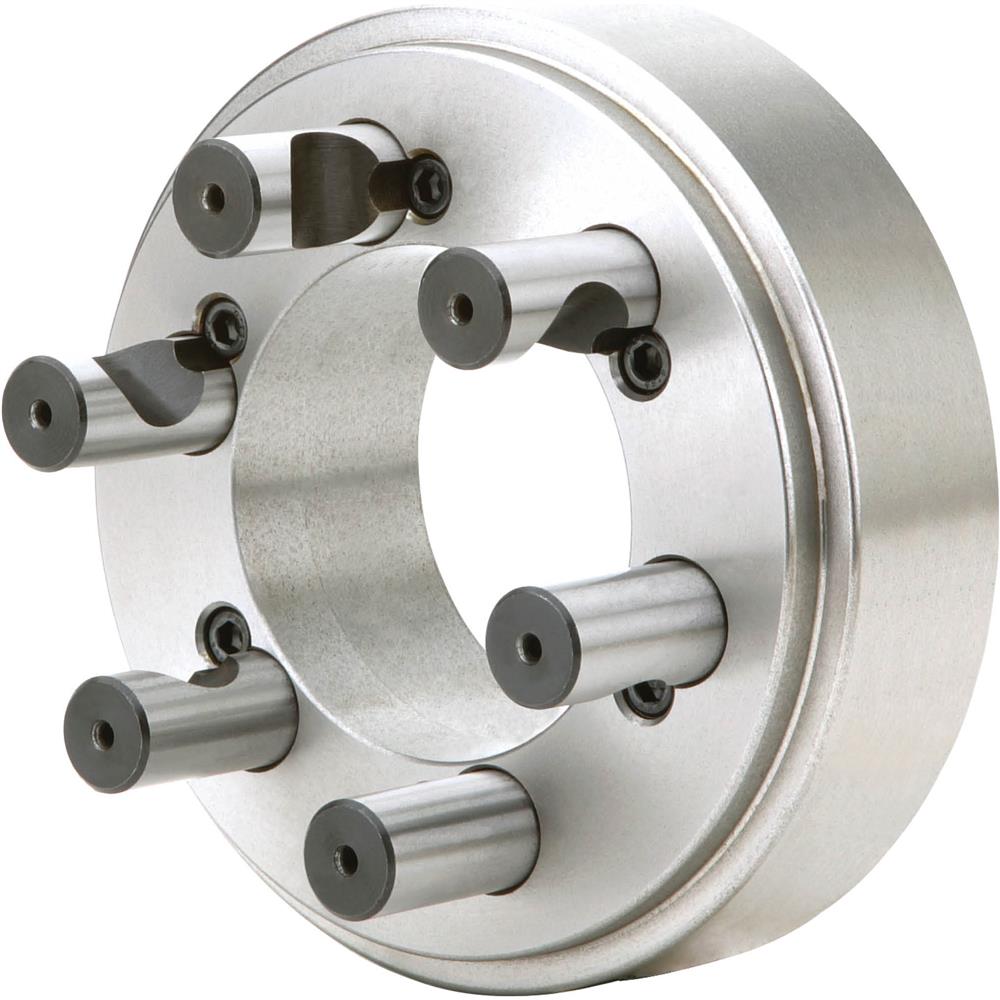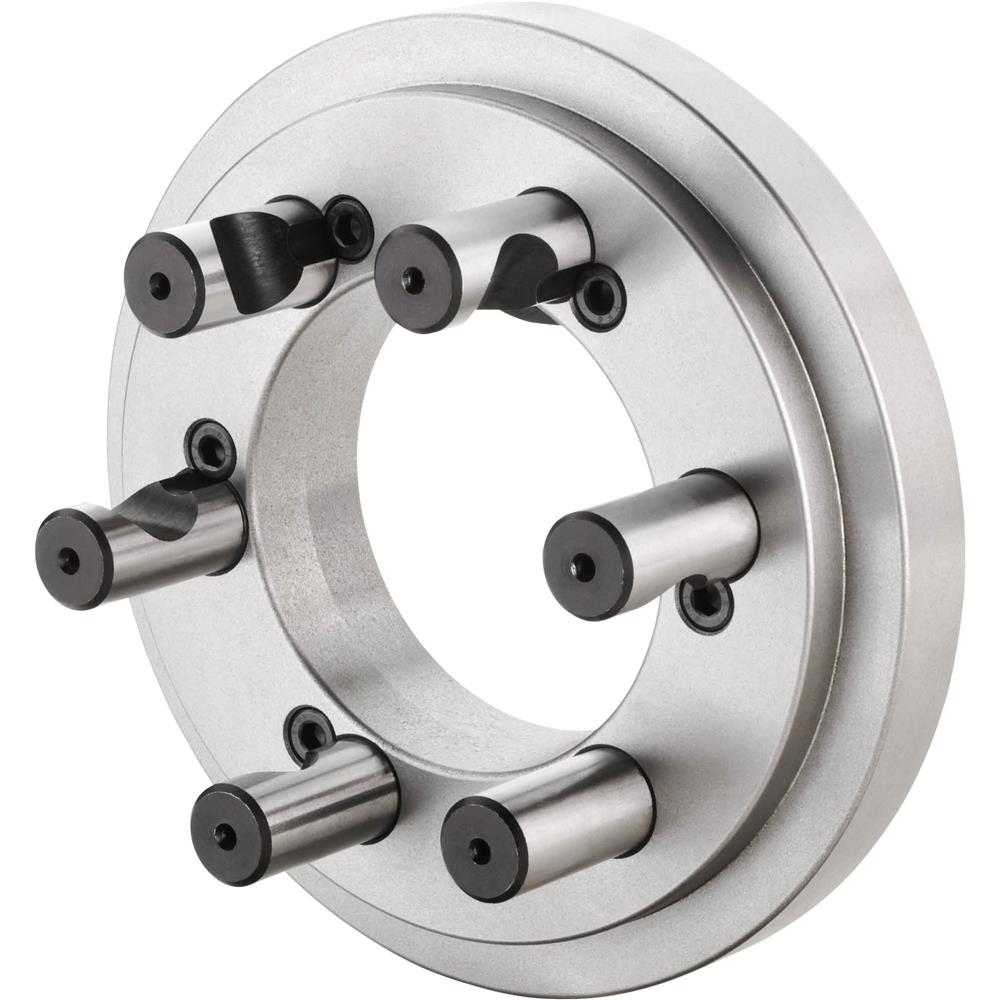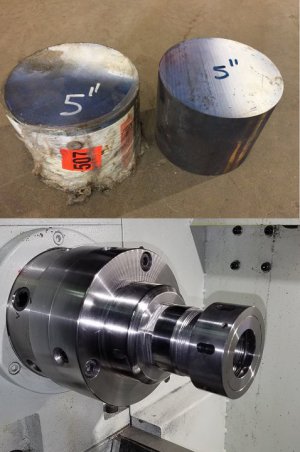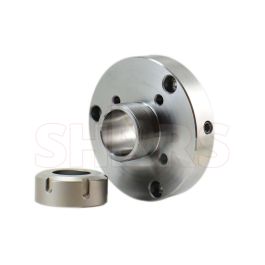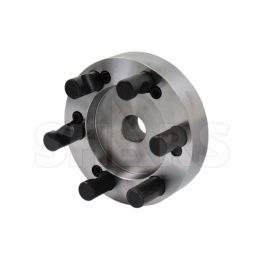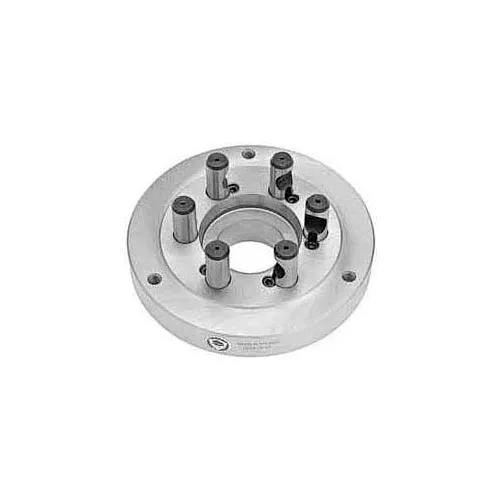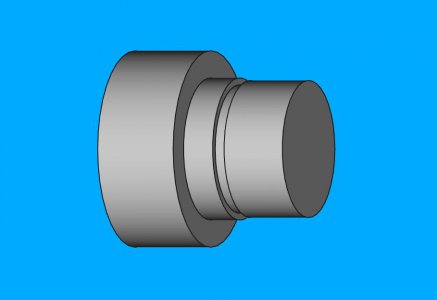- Joined
- Dec 18, 2019
- Messages
- 6,464
A while ago, I purchased an ER40 set tru chuck. At the time, the backplate wasn't available, so I bought a 2" long chunk of 5" diameter cast iron to make the backplate. Honestly, I guessed on the length, but it looks like it will work out very well. Bought the cast from Speedy Metals, as they were the only place where I could get cut by the inch cast iron.
Using some measurements from my G0752Z lathe, and from the Shars website, I have modeled the backplate. There are very few measurements given for the set tru backplate, but the chuck itself is very well documented. I still need to confirm my spindle measurements, but since the model is parameterized (almost completely) should be able to tap in the measurements into the spreadsheet and the model will be updated. Used FreeCAD to do the work. After the steep learning curve, it has been surprisingly easy to put this together.
Anyways, to start, here's a view of the spindle side. Hope to get this going in earnest this coming week.
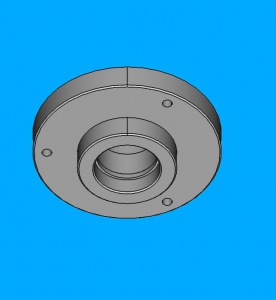
Using some measurements from my G0752Z lathe, and from the Shars website, I have modeled the backplate. There are very few measurements given for the set tru backplate, but the chuck itself is very well documented. I still need to confirm my spindle measurements, but since the model is parameterized (almost completely) should be able to tap in the measurements into the spreadsheet and the model will be updated. Used FreeCAD to do the work. After the steep learning curve, it has been surprisingly easy to put this together.
Anyways, to start, here's a view of the spindle side. Hope to get this going in earnest this coming week.



